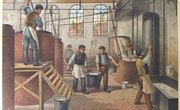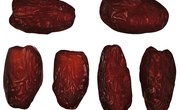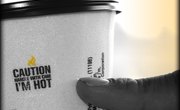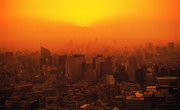During World War II, a huge number of plastics were developed and put to use. Many of these products, such as styrene plastic, are still around today. Plexiglas, which is often mistaken for a petroleum-based plastic, is actually an acrylic substance that is formed from natural gas processes. As a result, Plexiglas is completely inert. There are still rumors about the effects that sun has on this material though, but these rumors can be easily disproved.
Yellowing
There are a variety of petroleum-based plastics, including styrene and polycarbonate to give a few examples, which will yellow and become cloudy when exposed to sunlight for long periods of time. Lucite and Plexiglas are both acrylic-based materials made from natural gas that have also been lumped into this category, even though there is no yellowing effect on either of them. When natural gas is made into an acrylic substance, it becomes inert, which means it doesn't react chemically to heat, sunlight or chemical contact. As such, Plexiglas, despite the rumors, stays clear and bright in the sun.
UV
Another urban legend is the ultraviolet rays have negative effects on Plexiglas over long periods of exposure. As mentioned above, Plexiglas is chemically inert and doesn't react at all to sunlight no matter how long it has been exposed (Plexiglas cockpit covers on WWII planes are still clear despite decades of sun exposure). However, what Plexiglas does regarding ultraviolet light is reduce its intensity. As ultraviolet rays pass through Plexiglas windows, they're refracted and broken up, made less intense so that those on the other side of the window aren't exposed to the full level of the radiation.
Bubbling, Peeling and Cracking
The supposed fact that exposure to sunlight causes Plexiglas to bubble, peel or crack is also purely fictitious. Plexiglas often does crack once it has been installed, but this cracking is usually the result of temperature changes that cause expansion and contraction of the acrylic. Bubbling and peeling don't happen to acrylic sheets (though they do tend to scratch and scrape fairly easily). Other forms of plastic, such as polycarbonate, may bubble or peel when exposed to sunlight and the elements. These plastics are often confused with acrylic materials.
Related Articles
References
Writer Bio
Neal Litherland is an author, blogger and occasional ghostwriter. His experience includes comics, role playing games and a variety of other projects as well. He holds a bachelor's degree in criminal justice from Indiana University, and resides in Northwest Indiana.











